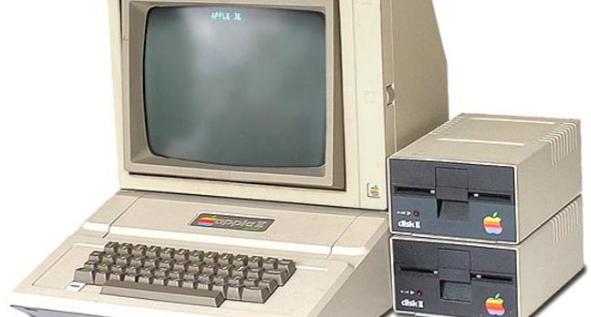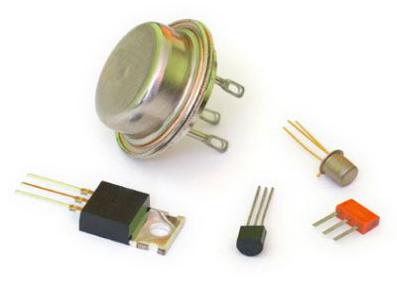

|
PART II |
ELECTRONICS |
|
С |
TEXT 1 |
|
|
1. оставьте2 вопроса покартинке (рис.6) и обсудите ихв группе. |
|
и |
|
бА |
|
|
Д |
Рис. 6
2. Прочтите текст и выделите основные темы повествования.
HISTORY OF ELECTRONICSИ
Electronics is the science dealing with devices operated by control of the movement oа electric charges in a vacuum, in gases, or semiconductors: or with the processing of information or the control of energy by such devices. This definition covers the wholу complex family of vacuum and gaseous electron tubes and their applications. It also includes metallic contact or semiconductor rectifiers and the transistors which utilize the control of electrons or positive charges (holes) to process information or to convert energy.
Electrononics was born in the 19-th century. Like hydrolysis or chemistry, it has come into its own only recently. Electronics first established itself, however, in wireless telegraphy. Industrial applications of electronics include control gauging, counting, heating, speed regulation,
22
etc. But in a larger field, electronocs leads to automatic control of largescale industrial operations.
Today, electronics has started у new era. Electronic devices are doing simple, but human-like thinking. Some industries are controlled by electronic robots. Automation is the industrial keynote of the day. Planes and rockets are electronically controlled. Some radiotelescopes work like radar to receive radio waves from outer space. Shortly speaking, electronics is not so much a new subject as a new way of looking at electricity.
3. Проч тайте |
выуч те. |
|
Charge – заряд; |
|
|
semiconductor – полупроводник; |
|
|
С |
|
|
tube – труба, тру ка; |
|
|
rectifier – рект ф катор, выпрямитель тока; |
||
utilize – спользовать; |
|
|
hole – отверст е, |
; |
|
convert – перевод ть, превращать; |
||
перфорация |
место; |
|
has come into its own – заняла |
||
keynote – основа. |
|
|
4. В каждомподобающееа заце текста определите ключевое предложение. |
||
Найдите абзац, который содержит основную мысль всего текста. |
||
5. Прочтите текст повторно и составьте план прочитанного тек- |
||
ста. |
А |
|
6. Прочтите следующие вопросы, найдите на них ответы в тексте |
||
и прочитайте вслух. |
Д |
|
|
|
|
|
|
И |
1. What is electronics? 2. When was electronics born? 3. Where did electronics first establish itself? 4. What does electronics lead to in a larger field? 5. What thinking is electronics doing? 6. In what branches of science and technology is electronics used?
7. Перескажите текст, пользуясь планом и ответами на вопросы.
8. Измените предложения, используя страдательный залог, согласно модели. Обращайте особое внимание на правильное употребление времен.
Model: T.: Electronic devices have revolutionized life.
St.: Life has been revolutionized by electronic devices.
23

1. Our engineers have developed many new devices. 2. Mendeleyev observed interesting regularities in the properties of elements. 3. We use boilers for many purposes. 4. We frequently cannot burn fuels completely. 5. The application of electronics is changing the entire life of people. 6. Our engineers will design and construct new thermal power stations.
С9. Измените предложения со страдательным залогом в предложе-
ния с действ тельным залогом, используя образец. Model: T.: Human-like thinking is done by electronics.
иSt.: Electronics does human-like thinking.
1. A new phenomenon of electricity was discovered by Edison. 2. Tremendous hydro potential will be seen by the delegates in Siberia. 3. Computers are usedбАby engineers in all the branches of economy. 4. Considerable scientific and technical progress has been achieved by our people. 5. Large atomic power stations are being constructed by the engineers in our country, US, and UK.
TEXT 2
1. Составьте2 вопроса покартинке (рис.7) и обсудите ихв группе.
Д И
Рис. 7
24
2. Просмотрите текст и постарайтесь понять, о чем идет речь.
TRANSISTORS
In 1948 a revolutionary concept was introduced to the electronics world: the invention of the transistor, a crystal which amplified, was an- Сnounced. Nothing like this had happend in electronics since the discovery of the triode vacuum tube in 1907; some years later radio tubes replaced
the crystal detectors of the wireless era.
Now a crystal amplifier, the transistor, challenges the vacuum tube because transistors are smaller, simpler, more efficient, more rugged and longer lived. Already transistors have replaced tubes in hearing aids, with unheard-of battery economy. Moreover, many transistor circuits have fewer components than the vacuum tube circuits, such as multi-vibrators.
For example, in switching circuits, such as multi-vibrators, one point- |
|
contact transistor will do the work of two triode tubes. |
|
иThe transistor is a current-operated device, whereas the vacuum tube |
|
is a voltage-operated device. The transistor seems destined to become a |
|
relatively high current, low-voltage device, although the vacuum tube is a |
|
high-voltage, low current device. Transistors, because of their desirable |
|
properties, shortly may replace electron tubes to a large extent in commu- |
|
nication equipment, computers, radio and television receivers. |
|
3. Прочитайте и выучите. |
|
Amplify – усиливать, расширять; |
|
бА |
|
unheard-of – неслыханный; |
|
rugged – неровный, твердый, стойкий; |
|
challenge – бросать вызов; |
|
aid – помощь, пособие, средство; |
|
switch – переключать, переключательД, выключатель, коммутатор; |
|
point-contact transistor – точечный транзистор; |
|
the transistor seems destined to become – транзистору, кажется, суждено |
|
стать; |
И |
receiver – приемник, резервуар. |
|
|
|
4. Задайте общие вопросы к следующим предложениям и дайте краткие ответы.
1. The beginnings of all science lie far back near the dawn of human history. 2. The transformer grew out of the experiment of Faraday. 3. Both elements differ in their chemical and phisical properties. 4. This mixture is
25

placed into a test tube. 5. The rotor of a steam turbine consists of manybladed fanlike wheels. 6. The resistivity of semiconductors will depend upon the direction of the current flow. 7. The signal can be amplified, recorded, or modified by an electric circuit.
С5. Переведите предложения на русский язык, обращая внимание на перевод because и because of.
1. Energy resources of our country are very large because of the great power potential in Siberia. 2. World energy resources are practically unlimitedиbecause we have studied only a small part of the mineral wealth of the earth. 3. Electronocs is useful to industry and science because a physical condition – temperature, weight, viscosity and thickness – can be converted into an electric signal. 4. All electric effects are really electronic, because allбАelectric currents result from the movement of electrons, and all electric charges appear because of accumulation of electrons.
6. Прочт те текст повторно и ответьте на следующие вопросы:
1. When were transistors invented? 2. When was the triode vacuum tube discovered? 3. What is the difference? 4. Why does the transistor challenge the vacuum tube? 5. What can you say about the destiny of transistors?
7. Подготовьте резюме (аннотацию) текста.
TEXTД3
1. Составьте2 вопроса покартинке (рис.8) и обсудите ихв группе. И
Рис. 8
26
2. Переведите следующий текст на русский язык в письменной форме:
SEMICONDUCTORS
A transistor is an active semiconductor device with three or more Сelectrodes. By active we mean that the transistor is capable of current gain,
voltage, amplification and power gain. A transistor is an electron device in which electronic conduction takes place within a semiconductor.
A semiconductor is an electric conductor with resistivity in the range between metals and insulators, in which the electrical charge carrier concentration increases with increasing temperature over some temperature
range. |
|
|||
|
|
The resistivities of semiconductors and insulators decrease rapidly |
||
|
|
бА |
||
with rising temperatures, while those of metals increase relatively slowly. |
||||
Unlike metals and insulators, the resistivity of semiconductors depends up- |
||||
onиthe direction of current flow. The direction of easiest current flow of |
||||
lowest resistivity is called the forward direction, the direction of restricted |
||||
current flow or highest resistivity is known as the reverse or back direction. |
||||
|
|
Semiconductors, such as the elements germanium and silicon, pos- |
||
sess two types of current carries, namely, negative electrons and positive |
||||
holes. A hole is a mobile vacancy in the electronic valence structure of a |
||||
semiconductor which acts like a positive electronic charge with a positive |
||||
mass. |
|
|
||
3. |
Прочитайте и выучите: |
|
||
Voltage – напряжение; |
И |
|||
germanium – германий; |
||||
silicon – кремний; |
||||
Д |
||||
valence – валентность. |
||||
4. |
Закончите следующие предложения, используя текст: |
|||
1. |
A transistor is an electron… |
|
||
2. |
The resistivity of semiconductors depends on … |
|||
3. |
The forward direction is … |
|
||
4. |
The riverse or back direction is … |
|||
5. |
Semiconductors possess … |
|
||
5. Посмотрите видео 4 и передайте его основную идею на английском языке.
27
